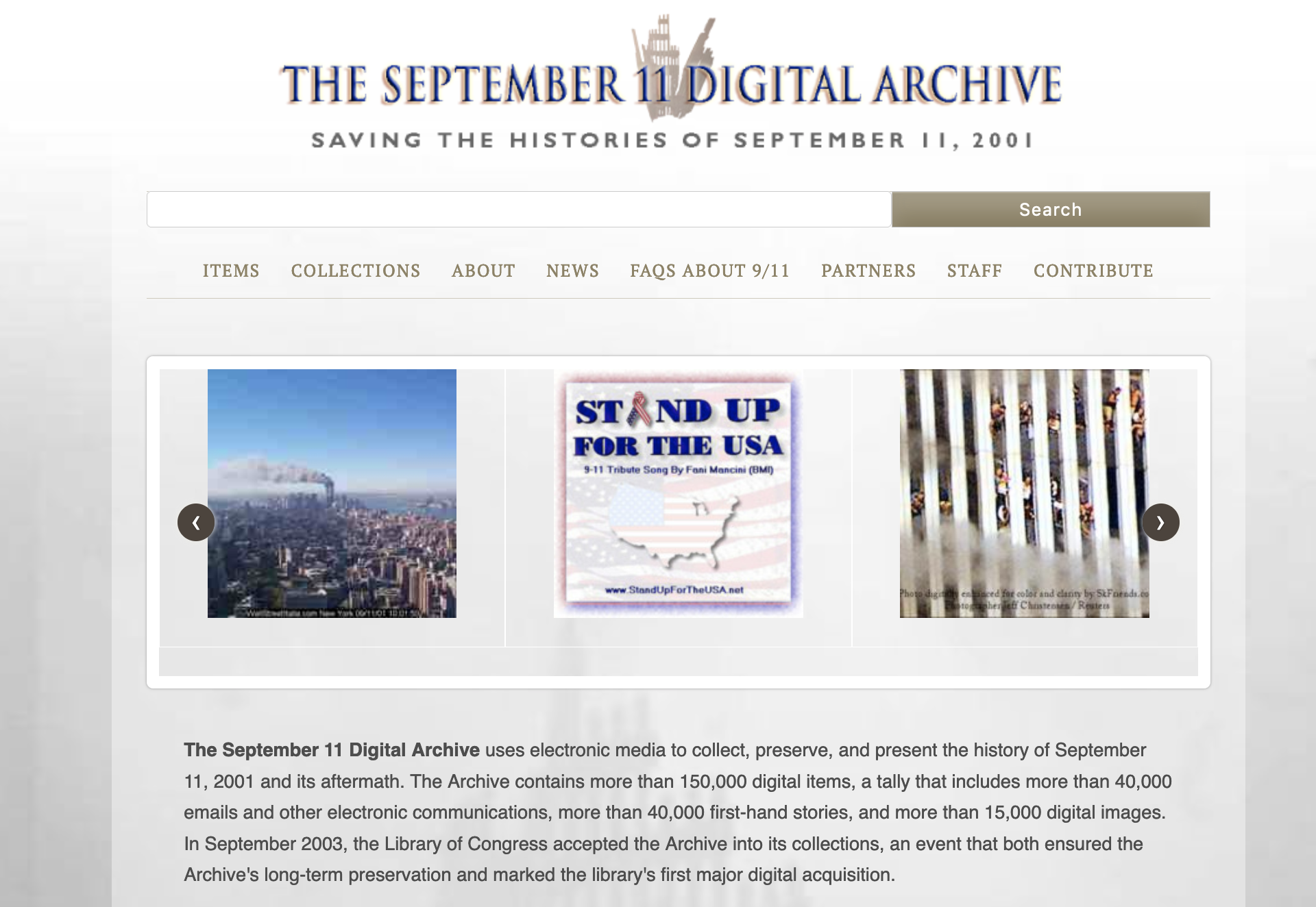
The September 11 Digital Archive was one of the first digital archives of its kind, and it went on to become the Library of Congress's first digital acquisition in 2003.
Launched in January 2002, the digital archive gave people a collective way to upload their stories online.
And it was challenging at first to get people to tell their stories, and share their digital photos and emails, said T. Mills Kelly, director of Roy Rosenzweig Center for History and New Media at George Mason University, the original home of the archive, because it was not common at the time and social media platforms like Facebook did not exist.
“It was really difficult to get the first 300 stories,” said Kelly. “In keeping with Roy’s vision, the archive now has 72,000 stories, more than 6,000 digital images, a little over 900 audio files, which makes it the richest archive of people’s personal experience at that moment.”
He added, “It’s the story of how average people made sense of this moment.”
Kelly said the success of these archives depends on people participating, because historians and average people want to know how these events were experienced.
Dan Cohen and Tom Scheinfeldt were two of the founding members of the September 11 digital archive.
Cohen joined Mason in 2001, when the center received an Alfred P. Sloan Foundation grant for a digital history of science. He said the foundation asked if there anything the center was doing to record and remember the history of 9/11. The center also partnered with the Smithsonian Institution and the Library of Congress.
“The project really took off and was featured on lots of newspaper sites, New York Times, CNN, MSNBC, and after a year or so, we ended up with 150,000 digital items, including tens of thousands of stories that people typed in,” said Cohen, who is currently at Northeastern University.
“On the first anniversary, Sept. 11, 2002, when things were still pretty raw, a lot of people came to the site and recording thousands of stories on that day.”
Cohen said 9/11 was for a brief window a unifying experience for people and part of the 20th anniversary is to memorialize the people who were lost.
“The biggest takeaway is this was the first major digital acquisition from the Library of Congress,” Cohen said, “and I think 20 years later it’s recognized as kind of pioneering project to use digital media and technology to record a really critical event in history as it happens.”
One individual contribution to the 9/11 digital archive that Schenfeldt recalls was a heart monitor log.
“A guy was wearing a heart monitor while out for a morning jog, running across the Brooklyn Bridge when the first plane hit the building right at 8:46 in the morning his heart-rate spikes,” said Scheinfeldt.
Other contributions to the archive included a collection of blogs, video games, animated GIFs, and a huge variety of file formats and technologies.
“What stands out the most is the 9/11 archive is an archive of ordinary experiences, made up mostly of the thoughts and feelings of ordinary Americans and people from around the world, who witnessed this event in real time on cable television and over the internet,” said Scheinfeldt.
He added, “It was the first global event of the internet age, and everyone was immediately touched by it.”
Sheila Brennan, who served as a co-director of the digital archive project team starting in 2009, said that the digital archive launched as an online collecting portal in the same year that Wikipedia launched.
“We’re building collections that don’t exist in physical museums,” said Brennan, who now works for the National Endowment for the Humanities.
James Sparrow, who served as associate director of the 9/11 digital archive, said the key to the archive’s success was its ability to engage a public audience for the task of preserving the memory of 9/11 before it faded or was lost to corrupted files, operating system upgrades or other changes. Sparrow is presently an associate professor at the University of Chicago.
“The 9/11 Digital Archive was a pioneering effort of university-based historians and digital producers to document the first world historical event that was fully captured and recorded in a range of digital formats,” said Stephen Brier, a professor at the City University of New York (CUNY). “When the Library of Congress accessioned the 9/11 Digital Archive in 2003, it was the first fully digital collection of materials it had ever added to its collections.”
Along with Roy Rosenzweig, Josh Brown was co-principal investigator of The September 11 Digital Archive, which was a collaboration between Mason and the City University of New York Graduate Center’s American Social History Project/Center for Media and Learning—for which Brown served as executive director from 1998 to 2019.
“Having collaborated on new media projects dating back to 1993, CHNM and ASHP decided to undertake this major archival project because we believed, as historians, that the digital materials related to the attacks would be central to any future understanding of Sept. 11th and the larger political, social, and economic meanings of that epochal historical moment,” said Brown, professor emeritus, CUNY.
